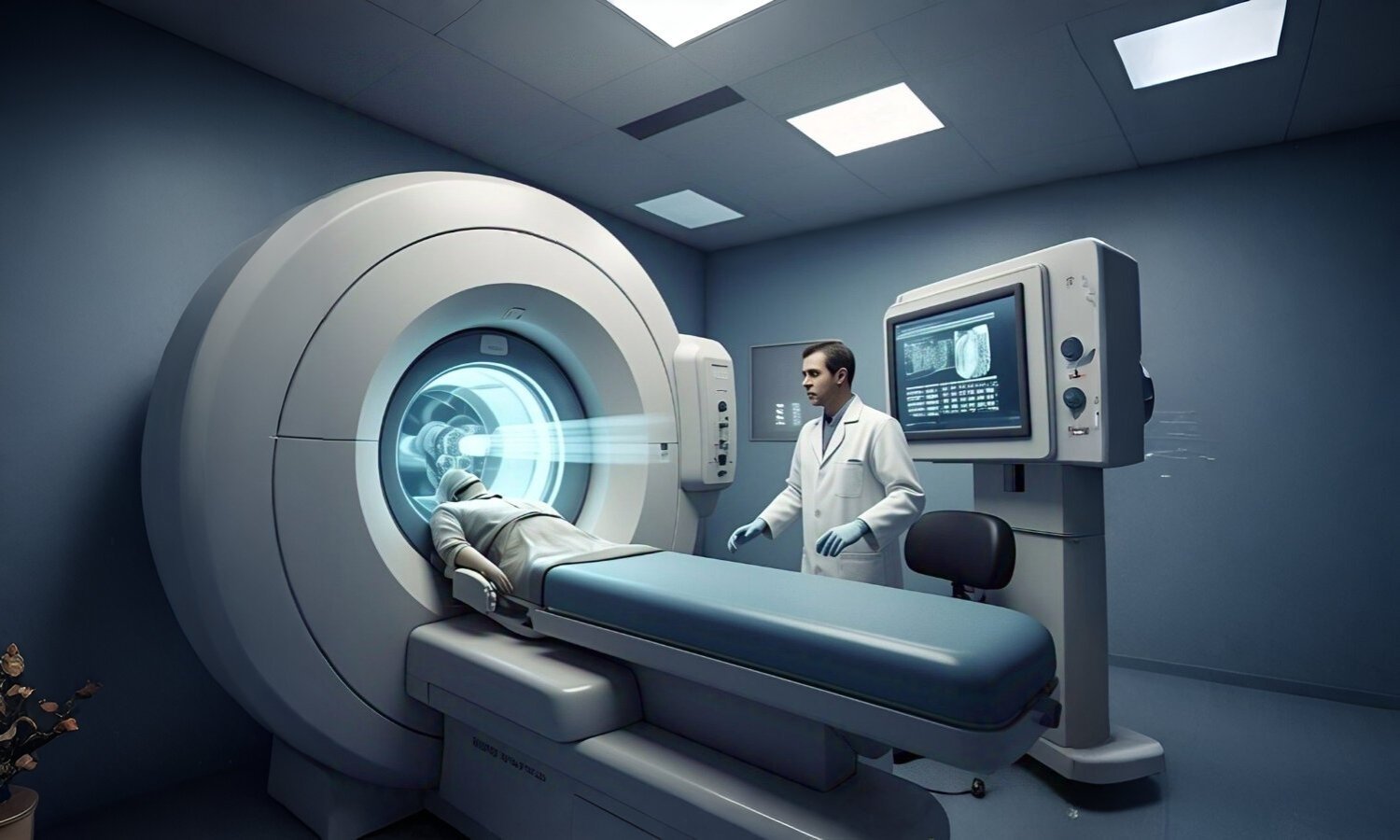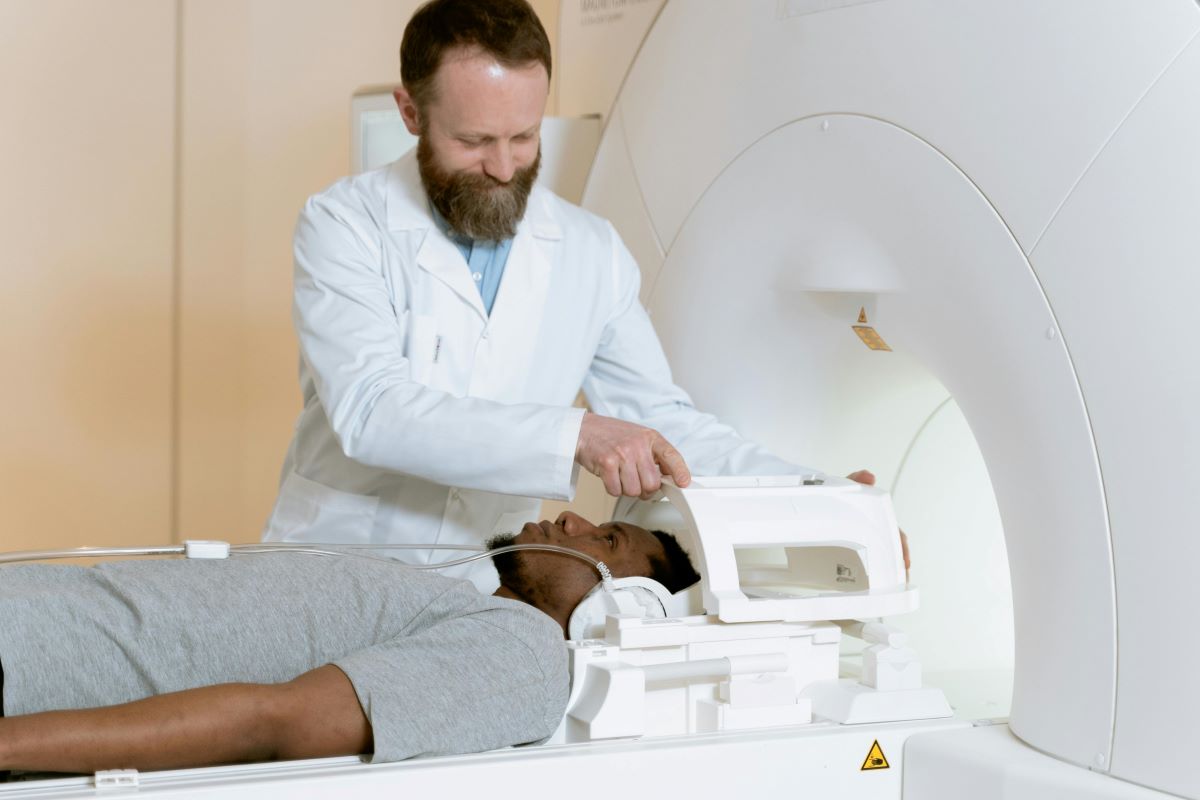Computed Tomography, or better known as CT, has been an indispensable tool in modern medicine. This advanced imaging technique, also called CT imaging or a CAT scan, helps healthcare professionals see detailed cross-sectional body images. Unlike conventional X-rays, which show only 2D images, CT scans provide 3D views. This helps doctors identify, diagnose, and monitor medical conditions more accurately. In this review, we explore CT scan technology, its working principles, advantages, and clinical applications.
Principles Behind CT Scan Technology
The base of CT scan technology is a combination of X-rays and computer processing. The CT scanner uses a rotating X-ray tube that emits a series of beams at different angles around the body. The sensors on the opposite side detect these beams as they pass through the body. Sensors measure the intensity of the X-rays passing through and send the data to a computer. The computer then processes it into cross-sectional images.
The key innovation of CT scan technology is that it reconstructs multiple 2D X-ray images into one 3D image. This allows clinicians to visualize organs, blood vessels, bones, and soft tissues in much greater detail than conventional X-rays.

Key Components of a CT Scanner
- A general CT scanner would contain some of the following important components that work in concert to generate high-resolution images:
- X-ray Tube: The X-ray tube generates the X-rays to pass through the body.
- Detectors: These sensors detect the X-rays passing through the body and convert them into electrical signals.
- Gantry: It is a circular structure that holds the X-ray tube and detectors. The gantry rotates around the patient in a circle to take pictures from different angles during the scanning process.
- The computer system receives data from the detectors, processes it, and reconstructs detailed images for radiologists to analyze.
- Table: The motorized table the patient will lie on moves through the scanner during the imaging process.
The Evolution of CT-Scan Technology
The first CT scanner was developed in the early 1970s by British engineer Sir Godfrey Hounsfield and South African physicist Allan Cormack. Their groundbreaking work earned them the Nobel Prize in Physiology or Medicine in 1979. Early CT scanners were large, slow, and produced lower-quality images. Advances in computing power, detector technology, and X-ray technology have significantly improved speed, image resolution, and patient comfort.
Modern CT scans produce high-definition images within seconds, providing quick results crucial in emergencies. Newer machines also minimize radiation exposure, ensuring greater patient safety without compromising diagnostic accuracy.
Applications of CT Scan Technology in Medicine
CT scanning has a wide range of medical applications, making it an essential tool in diagnostic and therapeutic procedures. The most common uses include:
1-Diseases and Conditions Diagnosed
CT imaging helps diagnose many conditions and diseases, including:
- Cancer: CT scans can visualize tumors and help measure their size, location, and determine whether they have spread to nearby tissues or organs.
- Infections: If there is suspicion of an infection, a CT scan can visualize an abscess, collection of fluid, and inflammation that may not be visible on conventional X-rays.
- Trauma and Injuries: Trauma applications are some of the more common uses of CT to evaluate bone, organ, or blood vessel damage, especially within emergency departments.
- Cardiovascular Disease: Cardiac CT may also be performed to identify calcium build-up in coronary arteries, blockages therein, and thus help evaluate the disease of the heart.
2-Guiding Medical Procedures
CT technology plays a crucial role in guiding a number of medical procedures, such as:
- Biopsies: The CT can identify abnormal tissues that will be biopsied with great precision, allowing the biopsy to be as accurate as possible.
- Surgical Planning: Surgeons use CT images to plan such complex procedures as gaining a clear understanding of the anatomy of the patient before entering the operating room.
- Radiation Therapy: Doctors use CT scans to plan and target radiation therapy, ensuring the radiation focuses on the tumor while minimizing damage to healthy tissues.
3-Monitoring Disease Progression
Physicians use CT scans to monitor chronic conditions like cancer, lung diseases, and cardiovascular disorders. Comparing images over time helps assess disease progression, treatment effectiveness, and necessary care adjustments.
Advantages of CT Scan Technology
- Large proportions of advantages are derived from CT scanning technology when compared to traditional diagnostic imaging modalities. These include:
- High Resolution Images: The X-ray images with high resolution are provided by CT scans that will enable the doctor to visualize structures inside the body more clearly.
- Speed and Efficiency: Most of the time, CT imaging takes some minutes and is thus necessary in cases of emergency.
- Non-invasive: Unlike surgical procedures, CT scans are non-invasive and don’t require an incision, thus being a safer alternative for many patients.
- Versatility: CT can review almost all parts of the body, from the head through the abdomen and on to the lower extremities.
Risks and Limitations of CT Scanning.
While CT scanning technology is highly valuable, a number of risks and limitations are associated with it. The main concern is the exposure to ionizing radiation, which may increase the risk of cancer, especially after numerous scans. However, modern CT scanners are designed to minimize radiation exposure, and doctors usually resort to this imaging only when the benefits outweigh the risks.
CT scans may also have limitations concerning soft tissue contrast. CT scans effectively visualize bones and organs, but other imaging techniques, such as MRI, often depict soft tissues in greater detail.
The Future of CT Scan Technology
As with most medical technologies, the future of CT scanning looks promising. Several advancements are underway to improve the precision, safety, and effectiveness of CT imaging, including:
- Low-Dose CT: Researchers are focused on developing CT scanners that use lower doses of radiation without compromising image quality, reducing the risk to patients.
- Dual-Energy CT: This emerging technology produces better detail and differentiation of tissues using two different levels of energies.
- AI Integration: Integration of Artificial Intelligence in CT will enhance image interpretation and result in rapid and accurate diagnosis.
Conclusion
CT technology has transformed medical imaging. It enables doctors to review high-resolution body images for accurate diagnosis and treatment. Generating cross-sectional images in a fraction of the time taken by conventional X-rays makes it essential for emergency and routine medicine. As technology advances, CT scanning will continue improving, enhancing diagnostic capability while reducing patient risks.
By understanding CT scan technology, its applications, and its benefits, patients and healthcare providers can make more informed clinical decisions. As technology advances, the potential for even more groundbreaking developments in medical imaging remains on the horizon.




